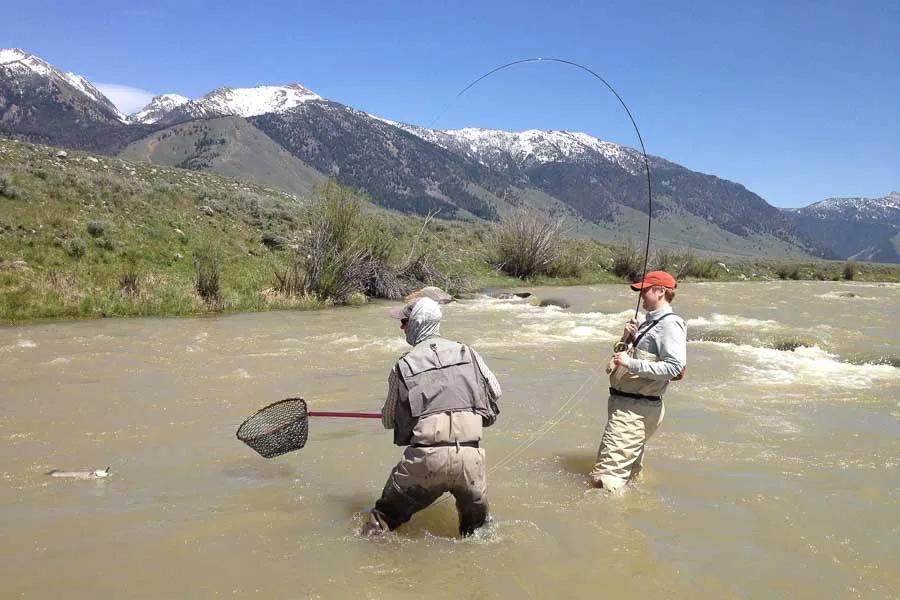
In a land where float fishing reigns supreme, we have great success on both our guided trips and our own personal fishing when wading. Float fishing obviously has some tremendous advantages such as covering vast amounts of water and accessing stretches of river that would be tough to get to by wading. Wade fishing, however, also brings a distinct set of advantages. Some of the best Montana fly fishing rivers or streams are too small to float fish. Even on large rivers like the Madison and Yellowstone have sections of the river that you can't reach from a boat such as side channels. While float fishing is great for covering lots of water, wade fishing allows you to spend more time in highly productive locations like trout rich seams and riffle corners. Many of our guides absolutely love to get out of a boat (or leave it behind) and hike or walk into very productive fisheries that are off of the radar of the numerous guides that prefer fishing from boats. I have found that most anglers that we guide can greatly improve their wade fishing productivity by simply focusing on where to position their body when fishing. The vast majority of folks that I fish with will walk into a run and pick out some good holding water in a location such as a seam or riffle drop. They then proceed to progressively fan out casts to hit each of these good looking spots without actually moving their bodies.
By far the most important technique that I have learned guiding wade fishing trips is that you have to constantly move your body when wade fishing. There is usually a specific casting geometry that allows you to get the perfect presentation in a certain situation. Just because your flies have landed in a sexy patch of water doesn't mean that they look right to the fish. There are a myriad of different casting techniques, rod positions and drift angles that can be effective on different types of water. The key is to target what casting geometry has been productive and then position your body so that you can make the perfect presentation to the section of water that looks the most promising. A typical example of this principle would be fishing hard seams or rocks. These types of locations in a stream or river produce drastic differences in currents. Trying to make long casts in pocket water with numerous lanes of currents is a fruitless endeavor because too much fly line ends up on the water resulting in almost instant drag on your flies. In this type of water condition "high sticking" is very productive. It requires making short casts followed by elevating the rod high in the air to keep most of the line off of the water. Usually the best location of the drift is directly across from the angler. There is usually a magical distance (not to close and not too far) where you get the best drift. It is important when fishing pocket water that you constantly move your body to position it at this magic distance from the productive seams that occur just below rocks.
Another prime example of body position is when fishing to rising trout on spring creeks or technical water. Although one can write a book on casting techniques used on spring creeks (and many have), my favorite position on a spring creek when a trout is rising in a glassy slick is to have the trout directly across form me with just a little bit of a downstream angle. This position allows the flies to arrive at the trouts location before the tippet (if a reach or curve cast is used), but still affords a lot of control for casting and mending. Just as in fishing pocket water there is usually a magic distance as well which is a bit longer than in pocket water. If you are too close to the trout they will spook, but if you are too far the many lanes of current interfere with the drift and produce drag that is often only noticed by the trout and not the angler. He fishing in these situations I often spend several minutes planning my approach and determining where the best location will be from which to make my cast. I then spend several more minutes slowly creeping into position to avoid spooking the trout or pod of trout. Finally I make my first cast which will now hopefully be the perfect presentation. If you want to increase your hookup rates when you are wading...start paying attention to where your body is positioned in the river and be willing to move your feet!
